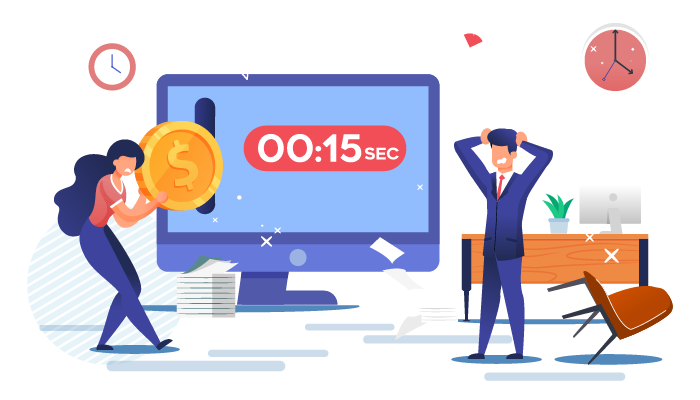On a good day, your contact center can run like a well-oiled machine, but call center shrinkage can derail the best-laid plans.
Picture this: You’ve got 50 agents scheduled to work on a Monday morning—enough staff to cover this notoriously busy shift. But at any given time, some individual staffers will be unavailable. They might be on a break or in a meeting, and some have likely called in sick or arrived late. Pretty normal, right? The difference between the time for which agents are paid to answer calls, and the time they actually spend doing so, is known as shrinkage. Every business deals with shrinkage, but too much can negatively affect agent performance, and ultimately, disrupt your customer experience. That’s a bumpy road you don’t want to travel.
What Causes Shrinkage?
There are many reasons an agent might be away from the phone. Call center managers have little control over some of the external factors affecting the time agents spend actually taking calls, though you can work to improve absenteeism and schedule adherence.
External Factors Include:
- Sick time
- Scheduled holidays and vacations
- Late arrivals
- Absenteeism
Internal shrinkage factors are time constraints that come from inside contact center operations.
Internal Factors Include:
- Lunch breaks
- Team meetings
- Employee training
- Post-call administrative work
Managers can have some control over these factors, though most are predictable and healthy parts of the normal workday. Not all shrinkage needs to be eliminated.
TIP:
Tools like Fonolo Voice Call-Backs push back on the productivity losses that can come with call excess center shrinkage.
How to Calculate Shrinkage
To calculate your shrinkage in hours you need to know two things:
- the number of hours employees are scheduled to work in a week and;
- the number of hours they spend doing other tasks besides working in that same time period.
Divide the time spent doing other tasks by the total hours scheduled, and you’ll get your shrinkage rate. For example, if an employee is scheduled to work 35 hours, and spends 10 hours doing other tasks, the shrinkage rate for that person is 10/35 or 29%.
How Much is Too Much?
Remember, shrinkage doesn’t always mean something is wrong. A certain amount of employee downtime is unavoidable and some of it even has a positive impact. For example, staff training and team meetings help you inform and educate staff. They help your agents feel engaged and improve your customer service. All good, right? So, how much shrinkage is too much?
A shrinkage level of 30-35% is average for call centers.
But every call center is different and what works for you will be unique to your business. Acceptable shrinkage levels can change from one team to another, too. To decide how much is too much, keep your eyes on other key metrics to see how shrinkage is affecting your call center and set your benchmarks accordingly.
Too few agents assisting customers will likely result in callers spending more time on hold, affecting your CSat Scores. Excess shrinkage rates can also impact other agents’ performance, lowering their productivity and increasing agent dissatisfaction. Don’t let high shrinkage rates start a domino effect that results in poor CX.
How to Control Shrinkage
Create a plan to address excess shrinkage in your call center; these steps can help get you there! Share your plans and your progress transparently with your agents and work together to achieve your call center’s goals. If you can identify recurring pain points, you’ll be able to correct small issues and help your contact center thrive.
- Track employee schedule adherence and improve it where you can.
- Monitor your shrinkage carefully, using annual overviews to improve future staffing projections.
- Be thorough and accurate when scheduling: include meetings, training and time off in your calendar.
- Monitor absenteeism and identify root causes and repeat absences.
- Offer incentives and training to keep agents competitive and reward great performance.
Remember: Shrinkage Doesn’t Tell the Whole Story
Like all metrics, shrinkage is a useful data point, but it doesn’t tell the whole story. Be sure to carefully consider how shrinkage impacts your business and your customer experience when you decide how to interpret the numbers. Instead of trying to erase the figure entirely, think about reducing the excessive shrinkage that negatively impacts your call center’s performance. And be sure to consider how changes you make to reduce shrinkage rates might affect other call center KPIs like average handle time, customer satisfaction, and agent retention.

The Golden Rules of SLAs
If you’re looking to quickly study up on SLAs, look no further. Download this free white paper to become an expert.

